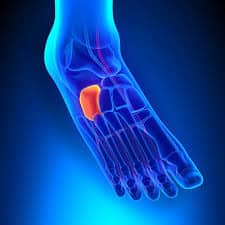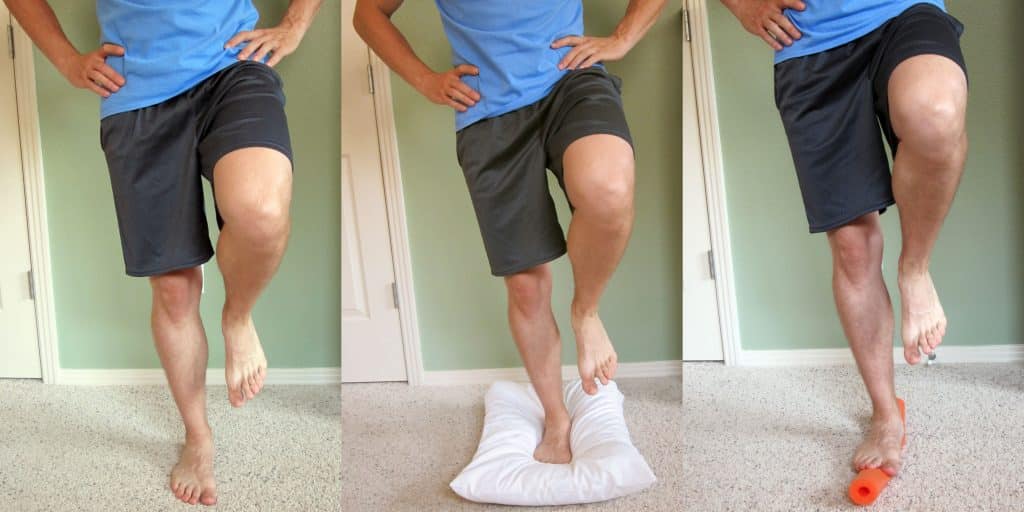The cuboid is a small bone that is located outside of the mid-foot. It is located right next to the heel bone where it is attached using strong ligaments. An injury to the soft tissues that support the bone can cause the cuboid bone to move out of position, which limits the movement of the joints surrounding the cuboid.
Cuboid Syndrome

What is Cuboid Syndrome?
What Causes It?
There are three leading causes of the cuboid syndrome, these include:
- The repetitive strain of the foot: When tension is experienced through the foot muscles from strenuous activities like ballet, running or jumping, excessive traction can cause partial misalignment on this bone. When symptoms pile up over time, you may need to seek medical advice.
- Injury: this is the most common cause of the cuboid syndrome. The most common is an inversion sprain A.K.A “rolling your foot”. This damages the soft tissues supporting the bone in position. Pain at this point is normally intense.
- Altered foot biomechanics: it has been shown that many people who suffer from cuboid syndrome have flat feet or what is called over-pronated feet.
Symptoms
The most classic presentation of the cuboid syndrome is pain down the outside part of the foot which can be across the foot to the ankle and finally to the toes. Foot pain is worse when one walks on an uneven surface or when changing directions fast. It is also commonly experienced when hopping or jumping, and when one rests, the pain is suppressed.
It gets difficult to walk since most patients will limp to avoid putting much pressure on the outer foot.
Treatment
There are several different foot treatment options available. These include:
Ice Therapy
Ice therapy can help to reduce the inflammation and pain. To do this, place a bag of ice pack or ice in a towel and wrap it around the outside of the foot for about ten minutes, then take a break, do this for 10 minutes intervals.
Manipulation
Manipulation is the most successful treatment for the cuboid syndrome because it is identified for relocating the bone back to its original position. When you visit your physical therapist or a podiatrist, a high-velocity amplitude thrust will be done to the bone to relocate it. This technique needs only be done by a specialist. Manipulation can settle the symptoms immediately. If you suffer from foot gout, a fracture, rheumatoid arthritis or bone disease or vascular problems should not use this technique.
After a successful manipulation, to keep the bone in the correct position, using other treatments help to treat ligament symptoms.
Tapping
Tapping is often used to support the bones in the foot and hold the cuboid in place and takes pressure off the foot joints. This can allows you to walk without any pain.
Cuboid Wedge
Another common treatment is where you have given a small foam wedge that input into the shoe and allows you to walk in the correct position.

Exercises
Strength and movement exercises can be performed daily to prevent the foot from stiffness and to get weak. Balance exercises also need to be introduced when symptoms have settled. If you ignore the foot balance, the risk of getting another ankle injury will be high. Start doing the exercises as soon as possible.
What Can I Do To Speed Up My Recovery?
Rest
It is important to take rest from heavy activities when the foot is under treatment. Use crutches when you are walking and keep your body weight from the foot that has an injury.
How long till I get better?
Long-term cases take months to heal, but if you respond to treatment well and follow your physician’s advice, within two months, you will be able to walk again comfortably.
Interesting Fact
6.7% of the ankle inversion sprain patients have the cuboid syndrome
80% of the people who suffer from cuboid syndrome have flat feet
Take Home Message:
-Ensure that you use your crutches during the recovery period
-Visit your physiotherapist to check on your progress
-Avoid high-intensity exercises
Thank you for reading, and we hope you benefited from this article. To receive treatment for your shin splints from our Physiotherapists or Chiropractors, call Masnad Health Clinic on (02) 9793 8840 or BOOK ONLINE.

New Client Offer - 10% OFF
Are you in pain? Not sure if we can help you?
Book your initial appointment and receive 10% off any service!